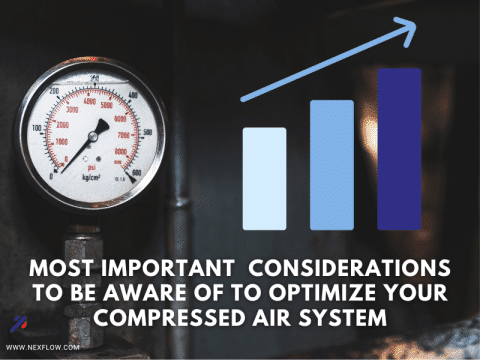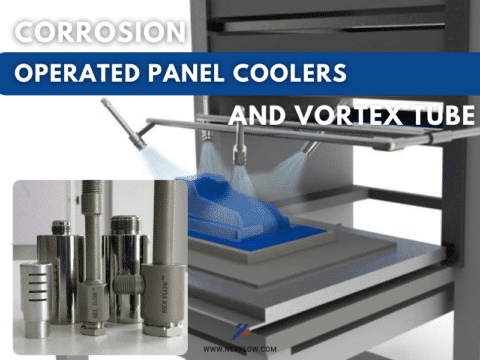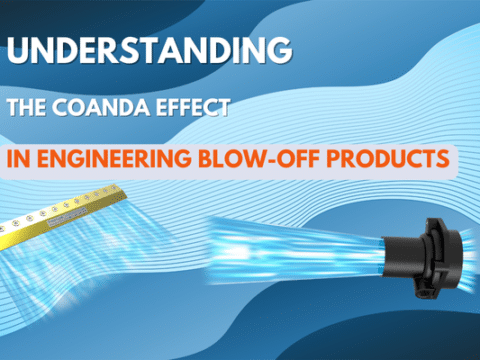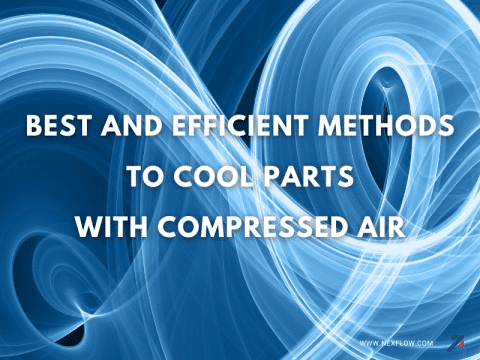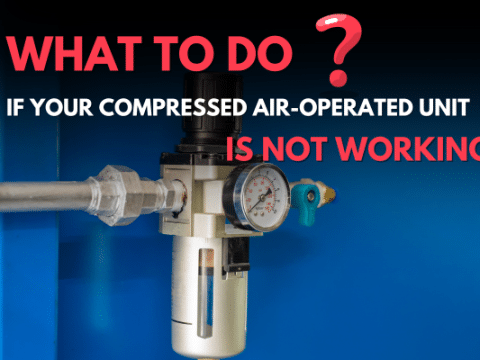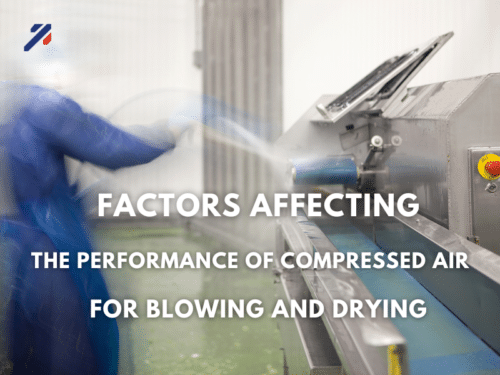
Factors Affecting the Performance of Compressed Air for Blowing and Drying
Compressed air is a versatile and widely used resource in various industrial processes, including blowing and drying applications. Several key factors can greatly influence its convenience and efficiency.
Backpressure
Backpressure refers to the resistance that compressed air encounters as it flows through the system to the point of use. High backpressure can significantly affect performance by reducing the airflow and pressure available for blowing or drying. It results in increased energy consumption and longer cycle times. Frequently, installers fit a blow-off product, like an air knife, with a connecting tube, hose, or piping. However, that is too small in diameter or too long. This results in excessive pressure drop and complaints about lack of performance or non-performance. Opening the “gap” on the blow off to consume more air actually makes it worse as it only increases pressure drop. The first thing one should check for lack of performance is the connecting lines to the product.
Distance from Air Compressor to Point of Use
The distance between the air compressor and the point of use is another critical factor. As air travels through pipes and hoses, friction and pressure drop occur. Longer distances can lead to decreased airflow and pressure, impacting the efficiency of blowing and drying processes. Along the way to the point of use, if far, uses up energy and it is important to ensure there is adequate airflow and pressure by the time it reaches the point of use.
Leaks in the System
Even small leaks in a compressed air system can have a significant impact on performance. Leaks not only waste energy but also reduce the available airflow and pressure at the point of use. Regular maintenance and leak detection programs are essential to ensure optimal system performance. Addressing leaks promptly can lead to energy savings and improved efficiency. Not only the piping can cause issues, but connectors and accessories in the system may also have leaks, especially near the point of use. One should check these to ensure there are no leaks.
Dirt in the System
Dirt, dust, and contaminants in the compressed air system can clog, and reduce or otherwise negatively affect the performance of the blow-off product. Air knives for example can have a spec of dirt clog a small area at the air outlet causing uneven flow.
Implementing proper filtration at the point of use is crucial to keeping the system clean. Filters and separators should be regularly inspected and replaced to prevent dirt buildup, ensuring that the compressed air remains clean and adequate for blowing and drying applications.
Compressed Air Capacity
The capacity of the compressed air system directly affects its performance. If the demand for blowing and drying exceeds the system’s capacity, it can lead to reduced airflow and pressure at the point of use. To optimize performance, it is essential to assess the specific requirements of your application and ensure that the compressor and storage capacity can meet those demands. Upgrading the compressor or adding storage can be necessary in cases of increased demand. It is all too often a blow-off system is installed and only after the fact, there is a realization that there is not enough capacity. Before considering any application, there should be a clear understanding of how much airflow is available. Having said that, this also creates an opportunity to see where engineered blow-off products can reduce compressed used inefficiently and potentially reduce energy use.
Balance of Compressed Air Usage
Balancing the use of compressed air among multiple applications is critical for maintaining consistent performance. If one application consumes a significant portion of the available compressed air, it can affect others, leading to reduced efficiency. Implementing pressure regulators and flow control devices can help ensure that each application receives the necessary airflow and pressure, optimizing overall performance. The air will always travel the least resistant path so if blow-off applications are spread out, this should be kept in mind.
Compressed Air Can Be Stored
Using sensors and solenoid valves or other process valves can lead to significant energy savings in many blow-off and drying applications by activating the compressed air only when necessary. Specifically, intermittent blow-off applications tend to prefer compressed air over blowers and electric motors due to the convenience of storing compressed air. When deciding on a system, intermittence should be a consideration in estimating overall cost. Any system for blow-off or drying can be made dramatically more efficient utilizing this ability to store the energy and use only on demand.
Final Thoughts
Compressed air is a valuable resource for blowing and drying applications. However, its performance can be significantly affected by various as outlined above. By addressing these factors, industries can reduce energy consumption, improve productivity, and achieve better results in their processes. Nex Flow offers consultation services to assist in optimizing the use of compressed air for blow-off, cleaning, drying and cooling.




